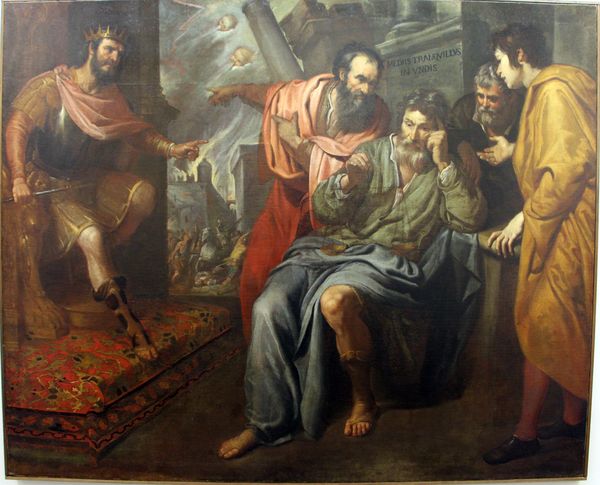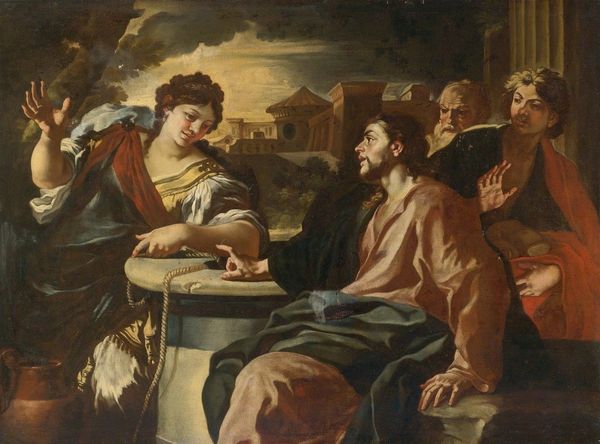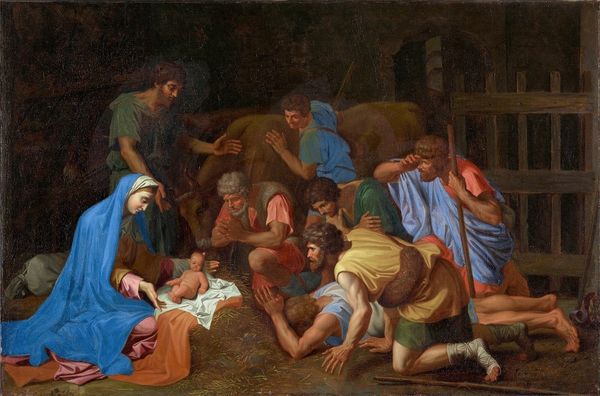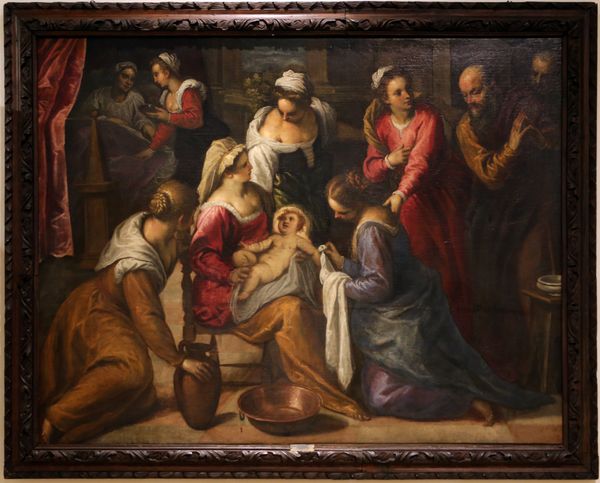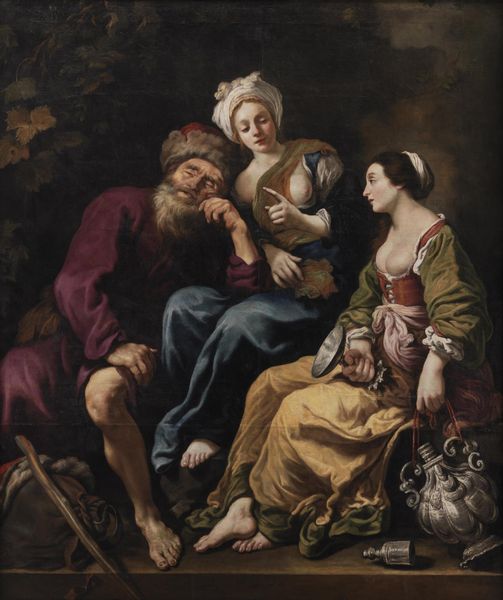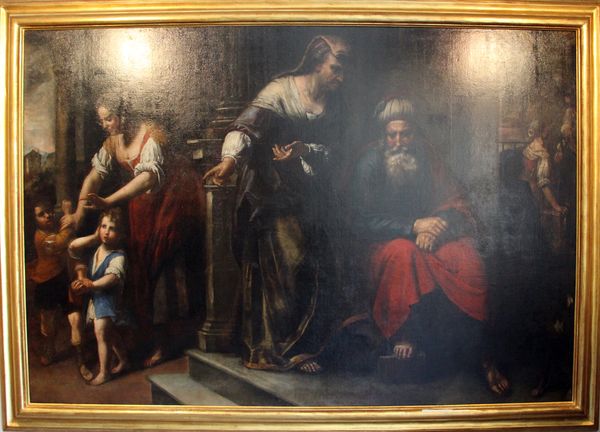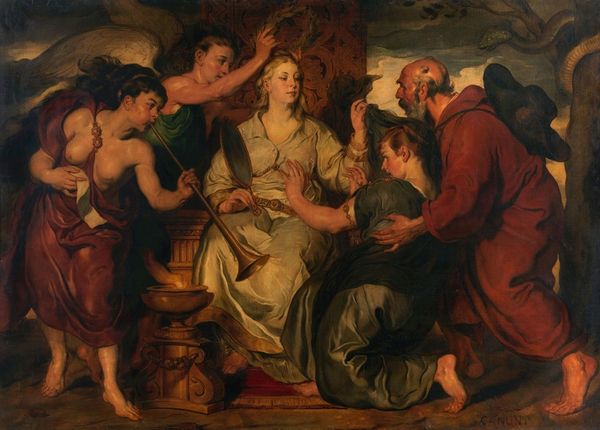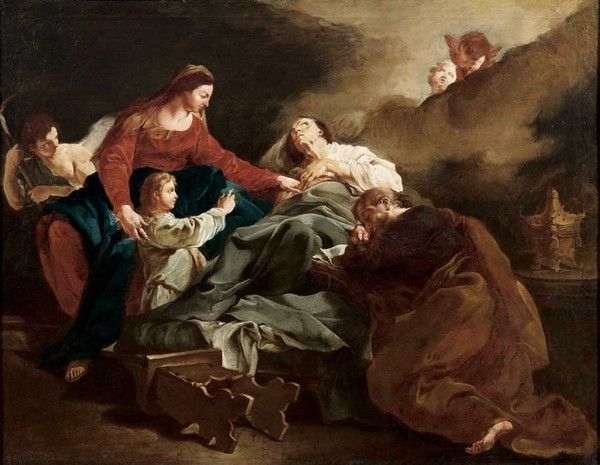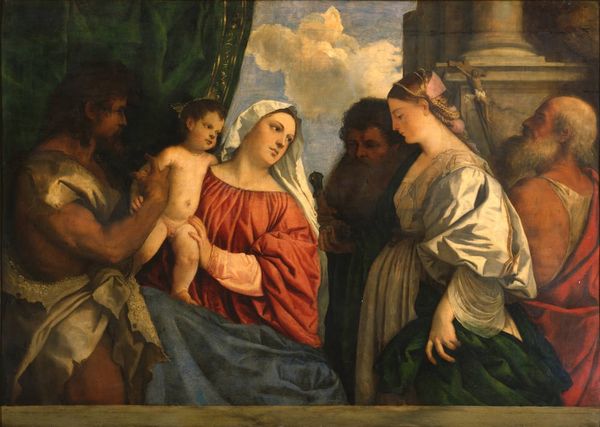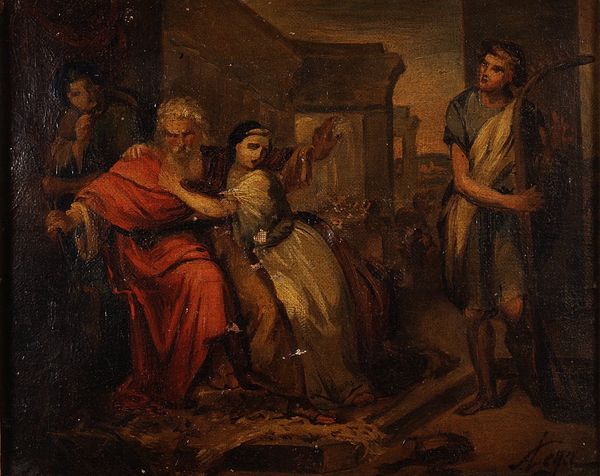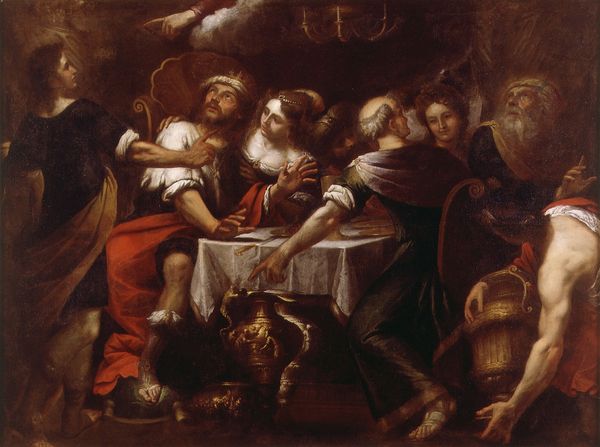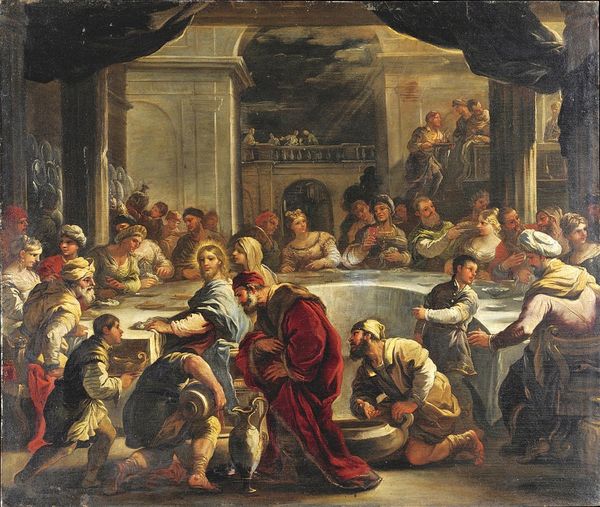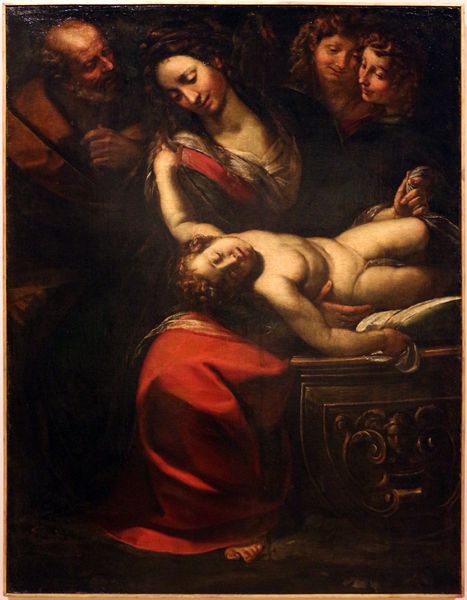
painting, oil-paint
#
portrait
#
narrative-art
#
baroque
#
painting
#
oil-paint
#
figuration
#
oil painting
#
history-painting
#
portrait art
Copyright: Public domain
Domenico Fiasella painted this canvas, titled "Samson and Delilah," in Genoa, Italy, sometime in the first half of the 17th century. Fiasella's painting brings to life a story from the Hebrew Bible, specifically the Book of Judges. It depicts the moment when Delilah, bribed by the Philistines, seduces Samson into revealing that his great strength comes from his uncut hair. While he sleeps, she cuts his hair, rendering him powerless, and allowing his enemies to capture him. This painting reflects the cultural values and social norms of its time. The portrayal of Samson as a vulnerable figure and Delilah as a cunning temptress speaks to the complex gender dynamics and power struggles of 17th-century Genoese society. Religious narratives like this served to reinforce moral and social codes. Understanding this work requires us to delve into the social history of Genoa, exploring its religious climate, gender roles, and the influence of biblical stories on artistic expression. Through archival research and historical analysis, we can gain a deeper understanding of the painting's meaning within its original context.
Comments
No comments
Be the first to comment and join the conversation on the ultimate creative platform.
